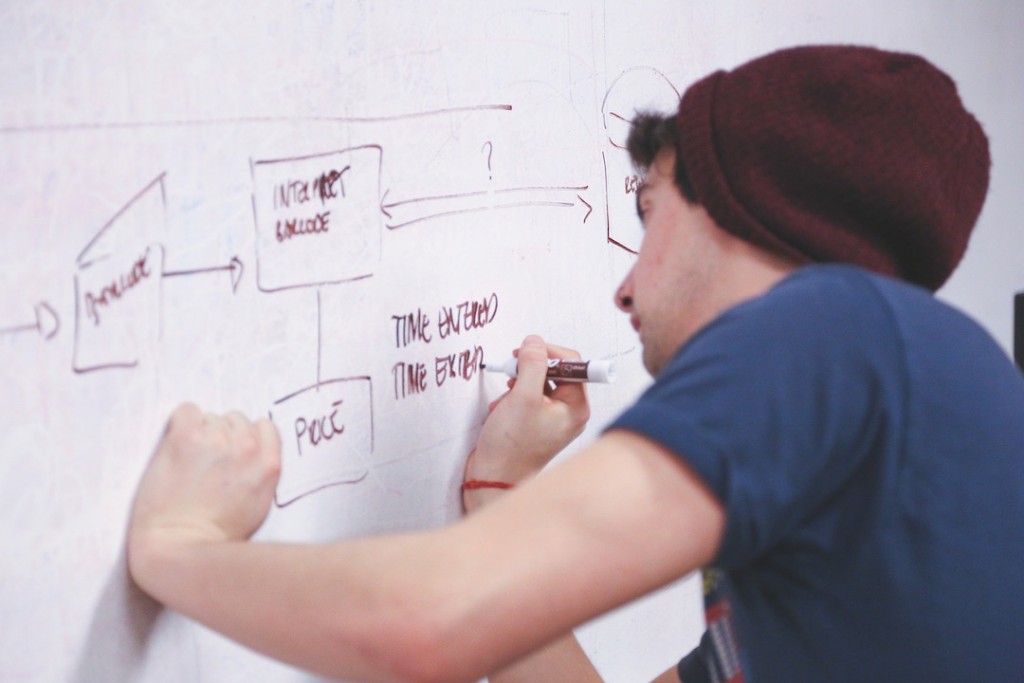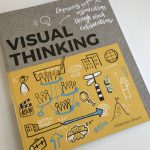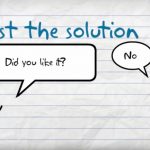What is actually Visual Thinking or Visual Working. A term you often heard nowadays, but what it is all about is often not quite clear. There are many facets or areas that all belong to it. Some of them I would like to take up here with pleasure once and look a little more exactly.
The best known branches of visual work
There are a number of disciplines and applications of visual work. The most well-known, or what most people associate with it, is sketching.
Sketchnotes
Sketchnotes are a kind of visual language. Instead of text, I try to capture facts and contents with the help of a visual language. For this purpose the creator develops his own language by replacing terms like office, table, laptop, smartphone with small and simple sketches and recalling them when creating a sketch. This can be done during a meeting, lecture, to learn or to create ideas. The use cases are almost unlimited. It is important that it is kept simple and can be created quickly. The author then creates layouts and drawing elements at his own discretion. Sketchnotes can be created analog on a sheet of paper or digitally on a tablet. Thereby always one event (lecture, day, topic) per page is created. Through clever structuring, entire stories can be told.
Visual Recording
Visual recording is a method of visually recording content in conferences or congresses. This is often done by a silent companion who records the event on a large screen next to the speaker. Similar to an interpreter, the recorder converts the spoken word into a visual language in almost real time and records it for the attendees. This is a skill that requires some experience of the recorder and requires a good visual vocabulary. In some cases the recorder is aware of the rough content of the event so that he can prepare himself conceptually.
Visual Facilitation
Related to this there is the Visual Application or the Visual Facilitation. Here, processes or applications are represented by a visual or picture language and thus made comprehensible. This can be done as a story or a prototype. Furthermore I have the possibility to make results visible and to clarify them by a visual representation. Visual Facilitation makes use of the fact that our brain is specialized in visually processing content. So I can illustrate a process with the help of a story and make it understandable for the user.
Corporate Illustration
Companies are also discovering more and more the impact and significance of visual content and are trying to incorporate it more and more into their daily business. For this purpose, company-owned content such as an icon set or a mascot is often used. Corporate Illustration deals with exactly such topics. The creation of an elaborated icon set which is used in the company. This includes, for example, the mascots or virtual companions already mentioned or symbols and icons that are associated with a brand.
Comics and Storytelling Videos
An area which is just making a big step forward. Stories and short animated videos help us to get easy access to certain topics. The so-called explanatory videos are mostly short animated sequences and try to introduce a topic in a very visual and easy to understand way. This is where the strength of visual thinking comes into its own as the videos are optimized in this area.
Illustration (Sketch)
It’s coming back into fashion. Almost everybody can take pictures by now. Almost every smartphone is already equipped with pointed cameras and supports and with a number of software solutions to take pictures in all situations. So let’s take a step back again and record our impressions in drawings. You can see more and more people with pen and paper moving through the cities and recording their favourite objects on paper.

Much more to discover
This is now an extract of the most common facets of visual work. Certainly there are many more. With this article I would like to introduce you to the most important ones and work out the core contents. I prefer to create my own sketches in workshops and lectures. I also like to use visual facilitation in my work. So everybody can find what he or she likes best and find his or her way into visual work.
Maybe you just have to try it out and experience it yourself. With Visual Thinking and its application you will be surprised how well and quickly it works. It will be easy to reconstruct contents and understand workshops. A great method which also brings a lot of fun with it. Give it a try.


